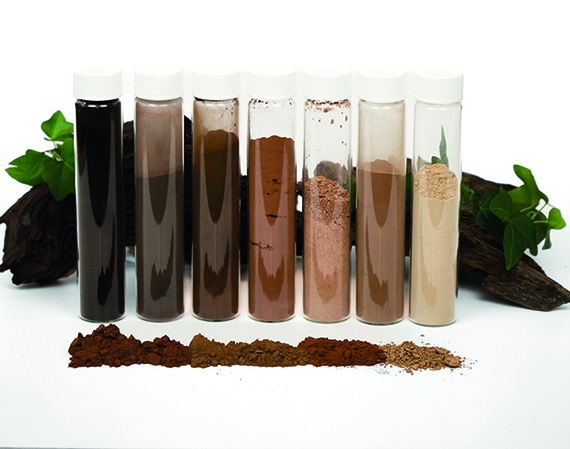More news
- Asian paint regulatory round up – Indonesian exterior paint still uses lead, warns W...
- Nigeria’s paint industry navigates regulatory changes and economic challenges amid p...
- Focus on the global coatings market: Global coatings market outlook
- Ask Joe Powder – October 2024
- Chinese paint majors look to domestic consumer sales as commercial real estate slumps

In the past, the natural raw material lignin was regarded as a by-product produced during the manufacture of pulp or bioethanol. Lignin has primarily been utilised thermally up until now. Today, it is also used as a renewable raw material for a wide range of products. For processing, it must be either in the form of fine powder or granules and therefore be ground or compacted. Hosokawa Alpine offers customised process solutions for both processes.
The natural properties of lignin can be used specifically in a wide range of applications. Whether in the production of carbon fibres, hard carbon for battery anodes, animal feed, as a building block for the chemical industry, a carbon black substitute for rubber (tyres), resins, plastics (thermoplastics, elastomers, waxes) or as an additive for foams (PU foam, aerogels) and cosmetics – lignin can serve as a useful replacement for fossil or harmful raw materials.
Individual processing of lignin
Like other natural raw materials, lignin is also prone to certain quality fluctuations. Various methods are used in processing, which result in different lignin qualities. “There are no standard processing solutions for this. Instead, a deep understanding of the respective application and its requirements is necessary,” explains Sonja Seiler, Head of Sales Chemical Division at Hosokawa Alpine.
“For industrial use, the performance of lignin in most target applications is highly dependent on its particle properties. Particle size distribution plays a decisive role here. As granules or briquettes, lignin can be processed further, allowing for good free-flowing and dust-free properties. For other applications, a finely ground powder is required. In both cases, Hosokawa Alpine can offer its support with comprehensive process know-how in compacting, grinding and classification,” advises Sonja Seiler.
Grinding with jet mills or classifier mills
Two types of mills from Hosokawa Alpine are particularly suitable for grinding lignin: The AFG jet mill achieves the finest grinding results through precise fine control, reaching high fineness levels of d97 = 5-15 µm. “The ACM classifier mill, on the other hand, is impressive with its low specific grinding energy, sharp separation limit and flexible production parameters, while enabling a coarser target product with a fineness level of d97 = 10-25 µm,” explains Seiler.
The Microburst AMB jet mill is ideal for use in laboratories and can also grind coarse or fibrous products to extremely fine levels without any preliminary crushing. In order to obtain a steeper particle size distribution, classification with air classifier ATP is recommended for dust removal at 2-3µm and top grain classification at 20-30µm.

Caption: With the ARC MS compactor from Hosokawa Alpine, lignin powder can be processed into dust-free granules or briquettes with a consistent and very high product quality
Granules versus powder
“Fine lignin powder is explosive, has poor flow characteristics and a low bulk density. For this reason, product handling is complex, occupational health and safety is cost-intensive and large warehousing areas are required,” says Sonja Seiler, pointing out the challenges. The solution to these challenges is granulating or briquetting lignin powder. In the process, the raw material is pressed, dust and webs are sieved out and then fed back into the process. A roller press enables the production of dust-free lignin granules or briquettes with a high product quality, increased bulk density and good flowability. “This not only enables better further processing, safe storage and efficient transport, but also reduces the risk of dust explosions and contamination,” Sonja Seiler sums up.
The granulation process consists of evenly dosing the material into the compactor, where it is compressed into a flake by two counter-rotating rollers. Subsequently, the flake is broken down to the desired particle size by pre-crusher and roller crusher.
Further research into the use of lignin
In order to conduct further research into the industrial use of the natural raw material lignin, Hosokawa Alpine is co-operating with Hamburg-based start-up company Lignopure GmbH. Together, the two companies aim to develop customised processes for the lignin market and offer individual solutions based on the quality of the raw material and its market potential.







